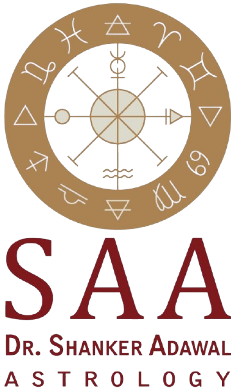 In Vedic astrology, Rahu and Ketu are perhaps the most mysterious entities, often feared, often misunderstood, yet undeniably powerful. Unlike the other planets, they are not physical bodies but shadow points—the lunar nodes—created by the intersection of the paths of the Sun and the Moon. Because they are born of shadows, they are called chhaya graha, shadow planets, and their influence is karmic, subtle, and deeply psychological. Ancient myths describe Rahu as the head of a demon and Ketu as the headless body, forever chasing the luminaries to eclipse them. Symbolically, they represent the eternal play of desire and detachment, illusion and liberation.
In Vedic astrology, Rahu and Ketu are perhaps the most mysterious entities, often feared, often misunderstood, yet undeniably powerful. Unlike the other planets, they are not physical bodies but shadow points—the lunar nodes—created by the intersection of the paths of the Sun and the Moon. Because they are born of shadows, they are called chhaya graha, shadow planets, and their influence is karmic, subtle, and deeply psychological. Ancient myths describe Rahu as the head of a demon and Ketu as the headless body, forever chasing the luminaries to eclipse them. Symbolically, they represent the eternal play of desire and detachment, illusion and liberation.
Astrologically, Rahu signifies obsession, ambition, materialism, and worldly desires. Wherever Rahu is placed in the horoscope, it amplifies hunger, creating intense drive for achievements, recognition, or experiences. Rahu is unconventional, breaking traditions and pushing individuals toward foreign or futuristic directions. Many sudden rises in politics, technology, or fame are linked with Rahu’s placement. Yet, the same Rahu can create confusion, deception, and overindulgence if uncontrolled. It tempts but rarely satisfies, teaching the lesson that unchecked desire can never bring lasting peace.
Ketu, on the other hand, signifies detachment, spirituality, and past-life karmas. As the headless body, it lacks direction but carries immense memory of past experiences. Wherever Ketu is placed, it creates disinterest, detachment, and sometimes dissatisfaction, pushing the native inward toward self-realization. A strong Ketu blesses with intuition, mysticism, and spiritual growth, while a weak or afflicted Ketu can create restlessness, isolation, or a sense of incompleteness. If Rahu shows what the soul craves in this life, Ketu shows what it has already experienced in previous lives.
Together, Rahu and Ketu form the karmic axis of the horoscope. They are always placed exactly opposite to each other, showing the balance between desire and renunciation. This axis reveals the life lessons one must learn—what to pursue and what to let go. For example, Rahu in the 10th house may create obsession for career success, while Ketu in the 4th house will reduce attachment to home and comfort, pushing the person to balance worldly ambition with inner peace. Their role is not to punish but to guide the soul on its evolutionary journey.
Remedies for Rahu and Ketu focus on harmonizing their intense energies. Worship of Lord Shiva is considered most effective, as Shiva represents the ultimate balance between illusion and truth. Chanting the Maha Mrityunjaya mantra, offering prayers at temples like Srikalahasti, and engaging in acts of selfless service are traditional methods to pacify Rahu and Ketu. Rahu is appeased by discipline and clarity of thought, while Ketu is calmed by meditation and spiritual practices.
In truth, Rahu and Ketu are not enemies of human life but teachers in disguise. Rahu pushes us into the world, showing us the futility of blind desire, while Ketu pulls us inward, reminding us of the higher reality. They are the shadows that reveal the light, guiding the soul beyond illusion toward liberation. As the sages remind us, “Without Rahu, there is no growth; without Ketu, there is no release.”
Mobile: 9818733000
www.ShankerStudy.com – ‘Bridging Ancient Wisdom with Modern Astrology’
Tag2Adawal.blogspot.com – ‘Blending Astro Stories with Soulful Simplicity’
www.ShankerAdawal.com – ‘Profile of Success: Vedic Wisdom and Business Strategy’
www.AskShanker.Com – ‘Discover the truth – ask one burning question based on your Horoscope!’
www.shrikrishnapravahashram.org – Serving Souls & Healing with Compassion: Empowering Girls, Upholding Tradition, and Offering Food to Every Guest – ‘Atithi Devo Bhava’!

